Water Protectant No. 3 on a Land Rover
Posted by Daniel Sutton on Nov 18th 2014
Q: Does Leather Conditioner Darken Leather?
A: This is a good question! I get this one a lot. The first thing you should understand about leather is that it is a very personable creature. When you purchase a piece of leather, you are purchasing something unlike anything else in the world. It's unique, it's distinctive, it's - you know what? I'm getting bored talking about this today. Let's look at pictures of this cool land rover instead!
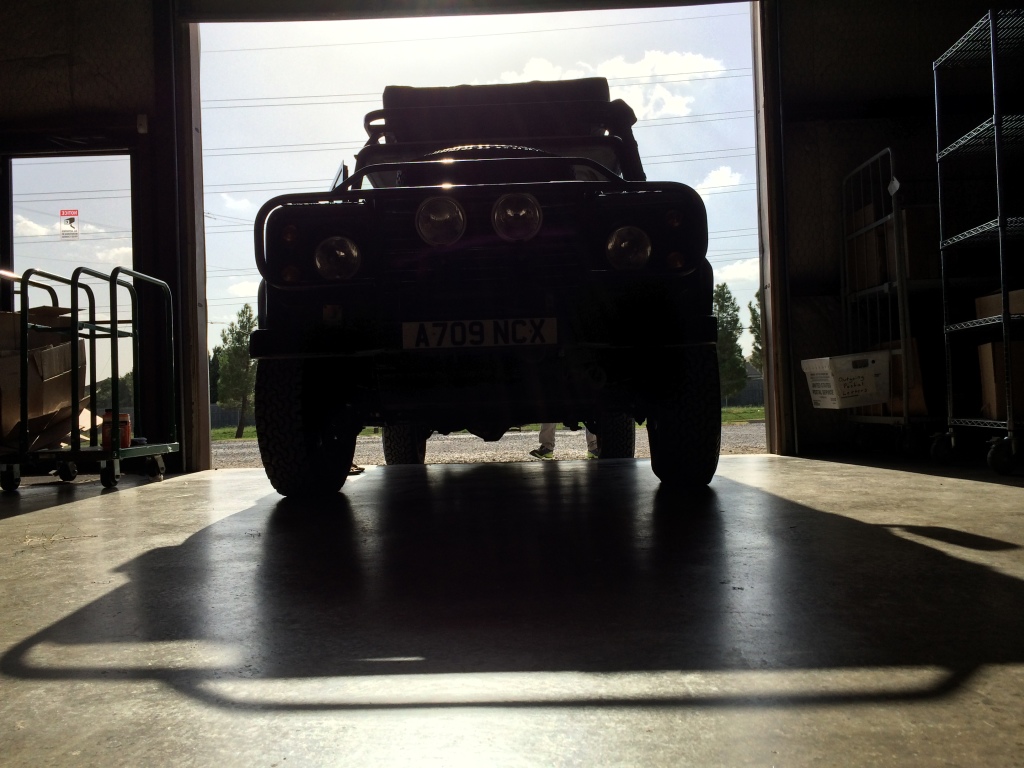
This is the Defender 110. Named after the one hundred and ten wild grizzly bears it out-muscled when I took it on an all-terrain expedition to the Canadian Rockies.

She's got the prettiest face you're likely to see this side of the Niagara Falls.

And one very nice bumper.
Unfortunately, she's feeling a little bit neglected on the inside. Probably because these seats haven't been cleaned or conditioned since, like, the day she was purchased. UV radiation is one cruel mistress, especially for leather.

FYI, this is classic Saddleback Tobacco leather, custom made by the Dave man. It's a lot like owning a Saddleback bag, except it makes loud noises and takes you places really fast. Needless to say, my grandchildren will be fighting over it when I'm dead. Provided I can get it looking nice again.
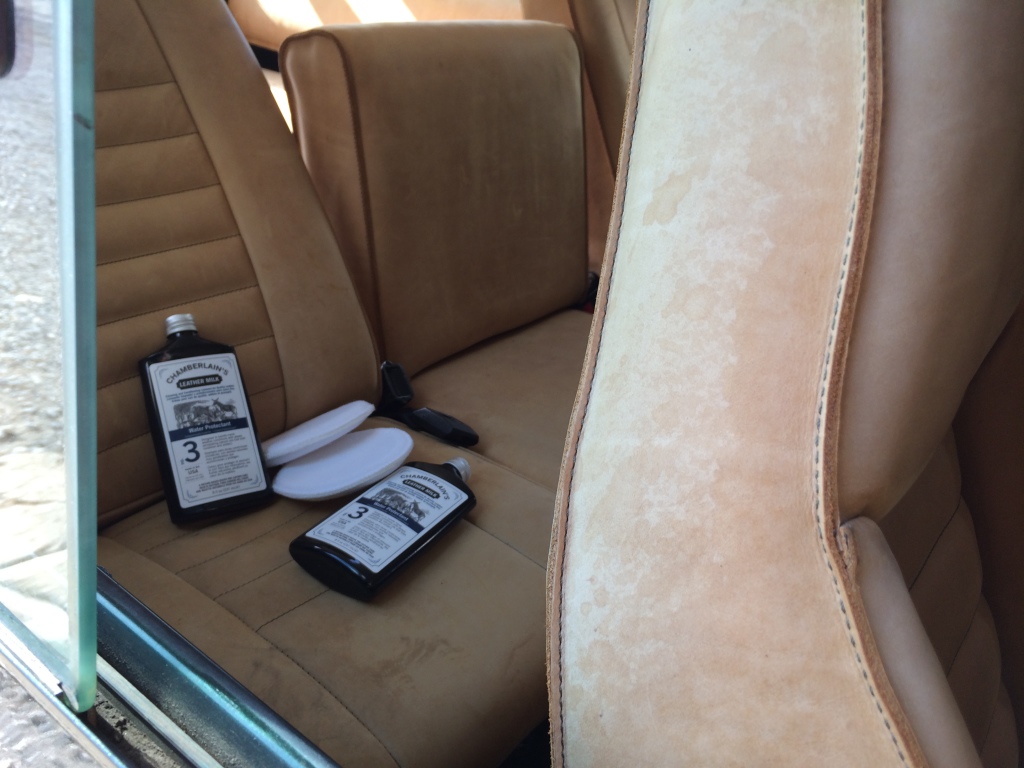
In Soviet Russia, Saddleback carries you.
So what are those little pumpkin-boos sitting over there in that seat corner? I'm happy you asked. Those little pumpkin-boos happen to be Chamberlain's very own Water Protectant No. 3 recipe! It's a heavy consistency, wax-based conditioner, otherwise known as Land Rover Defender 110's dinner.
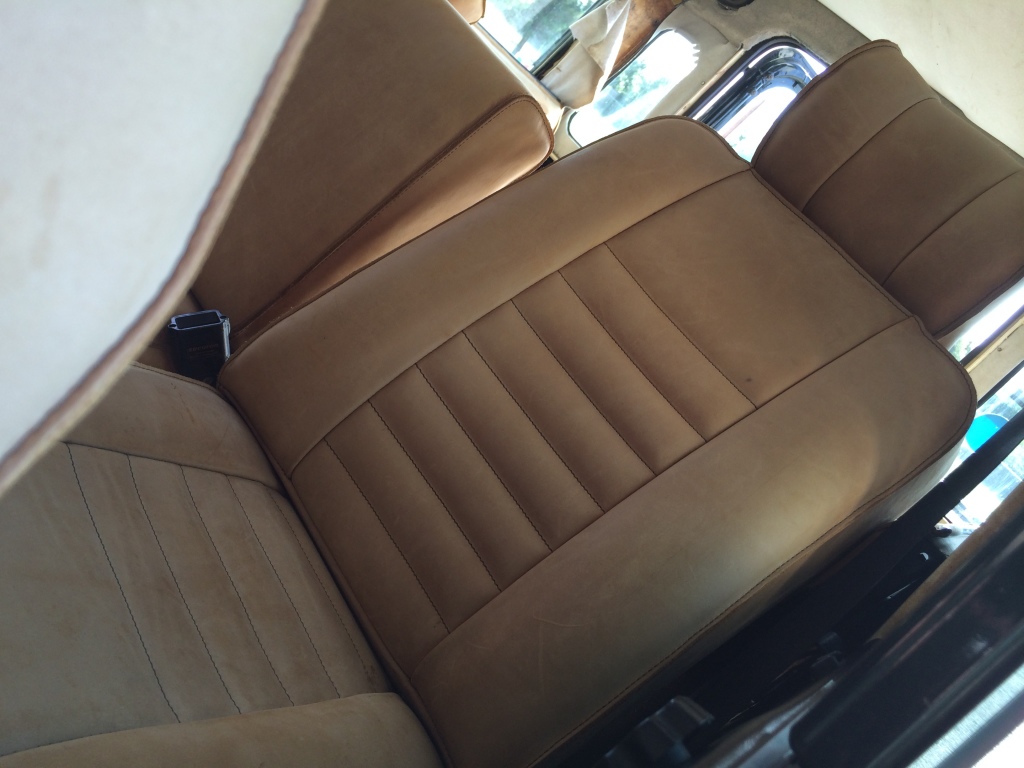
Dramatic hungry face!
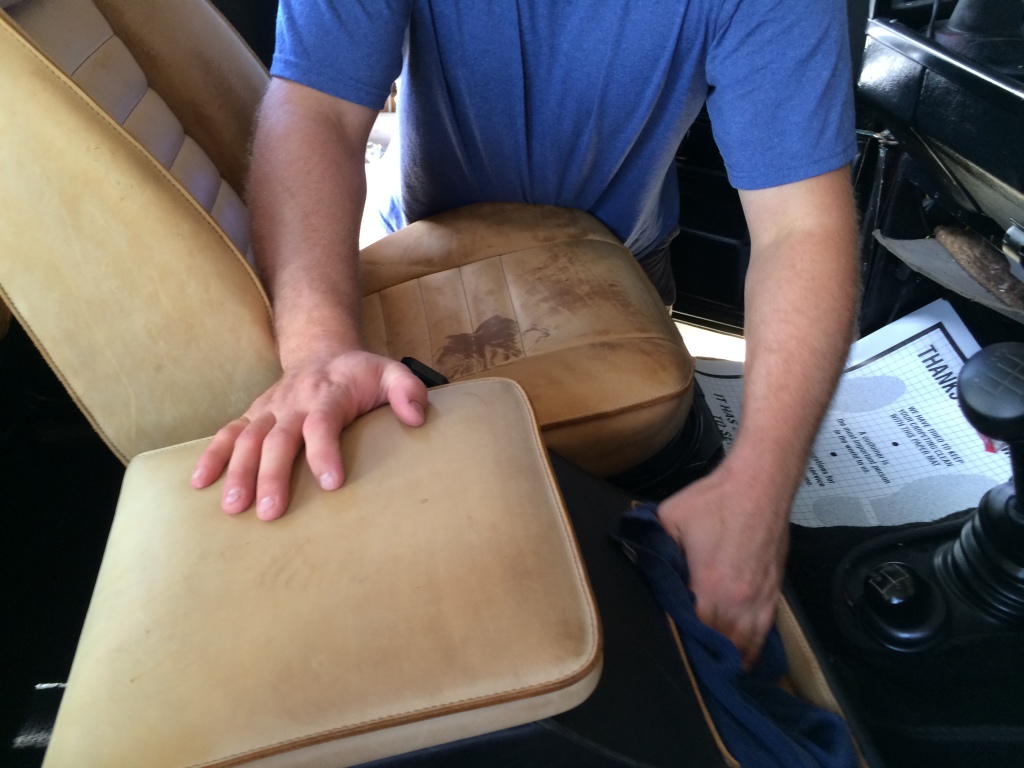
My first application was harrowing. This feral jungle cat has suffered much neglect. Its coat - once a rich, honeyed sunset - is now an arid and pale void.
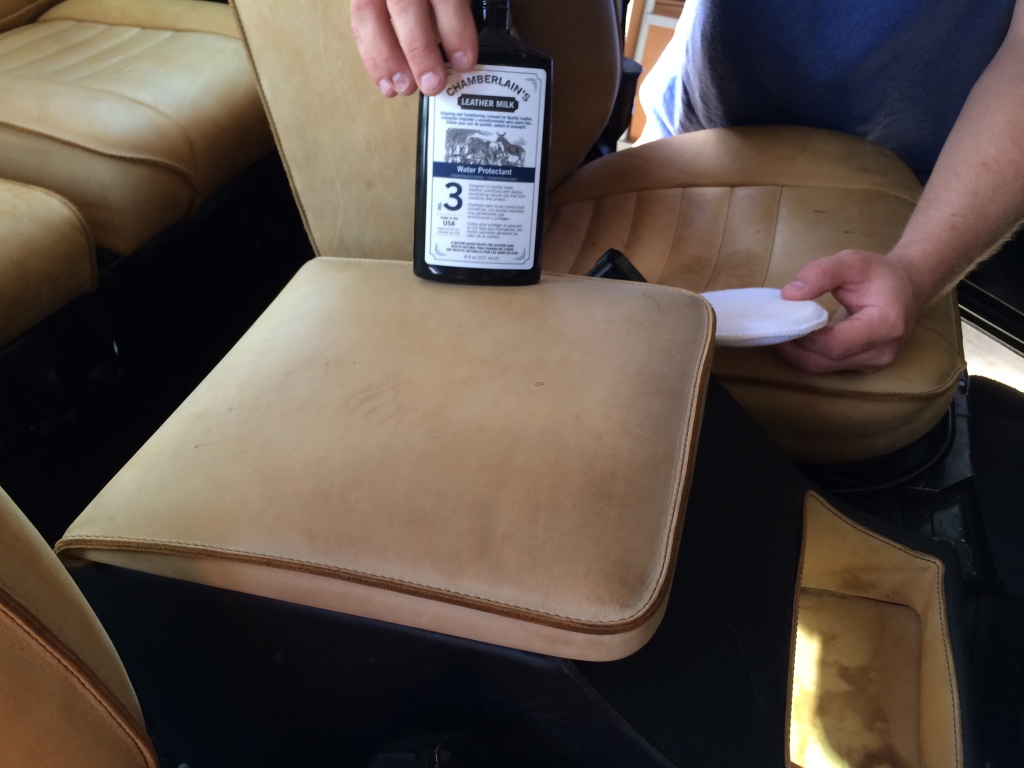
We're going to have to fix that.
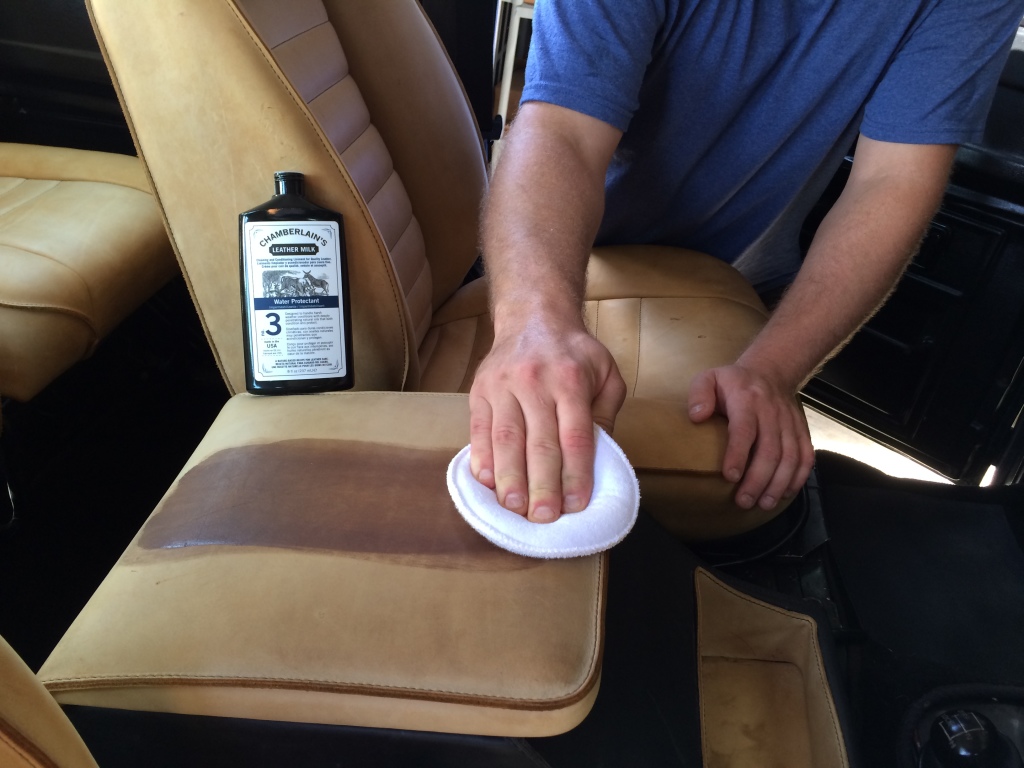
Her first stripe in years! Vibrancy like wet acrylic on canvas! Sweet glorious color!
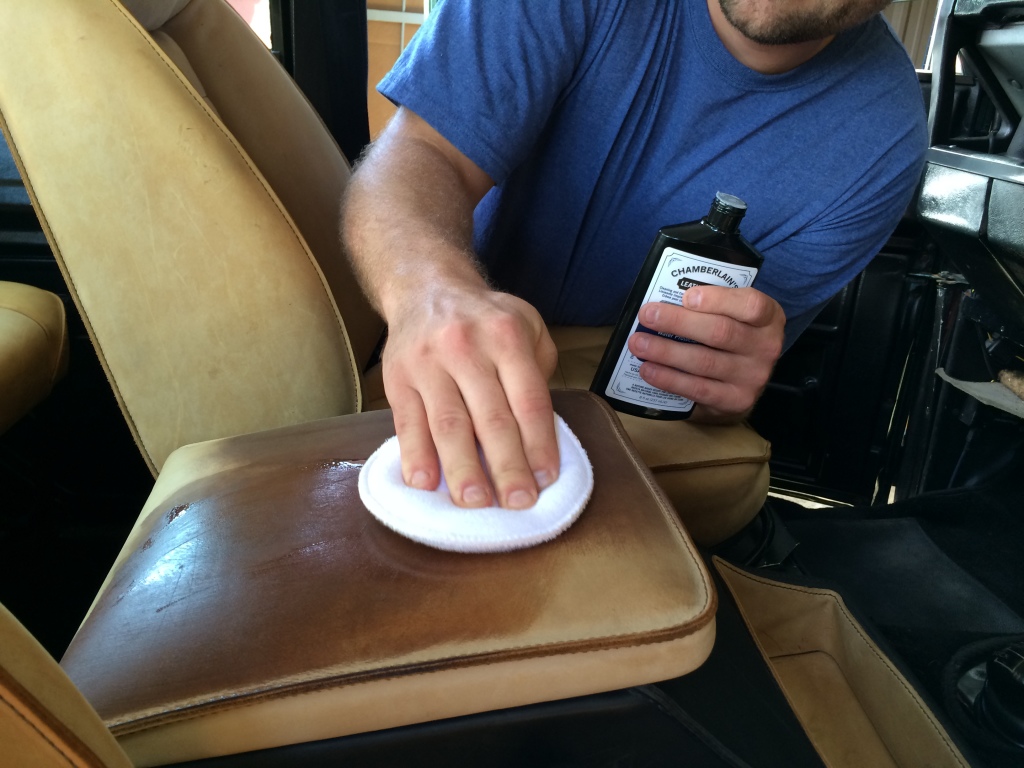
Okay, maybe a bit too much color. Mind easing off there, Jonathan old pal?
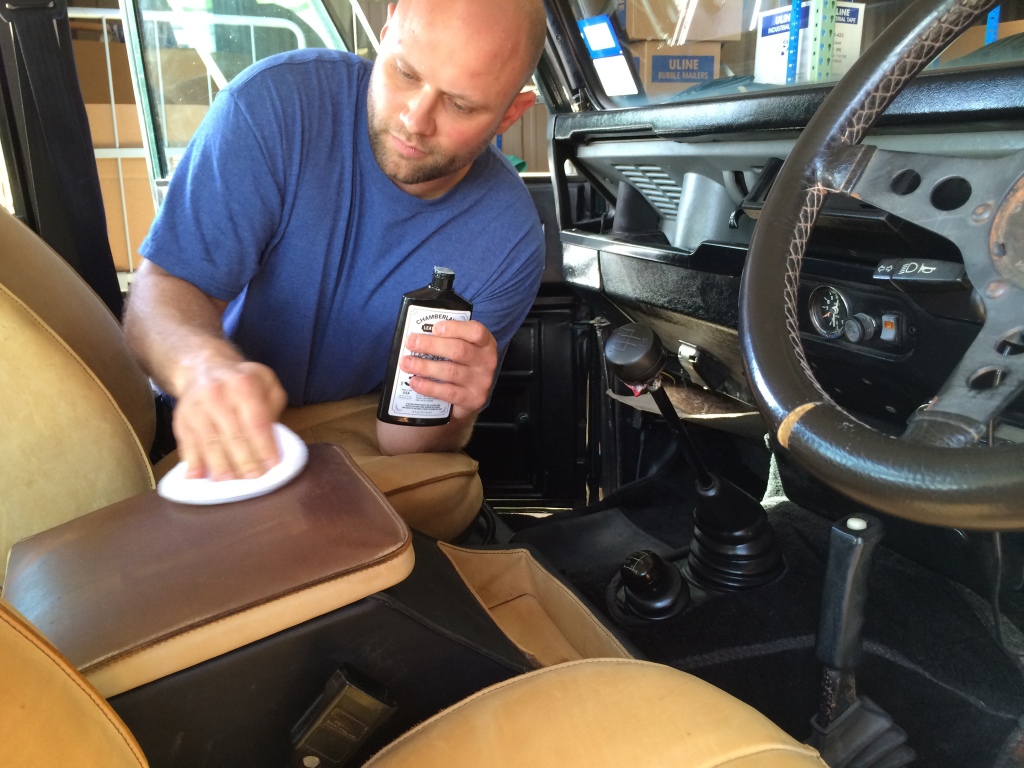
Okay, sure. Just ignore me and keep rubbing it in there. I'm sure you know what you're...
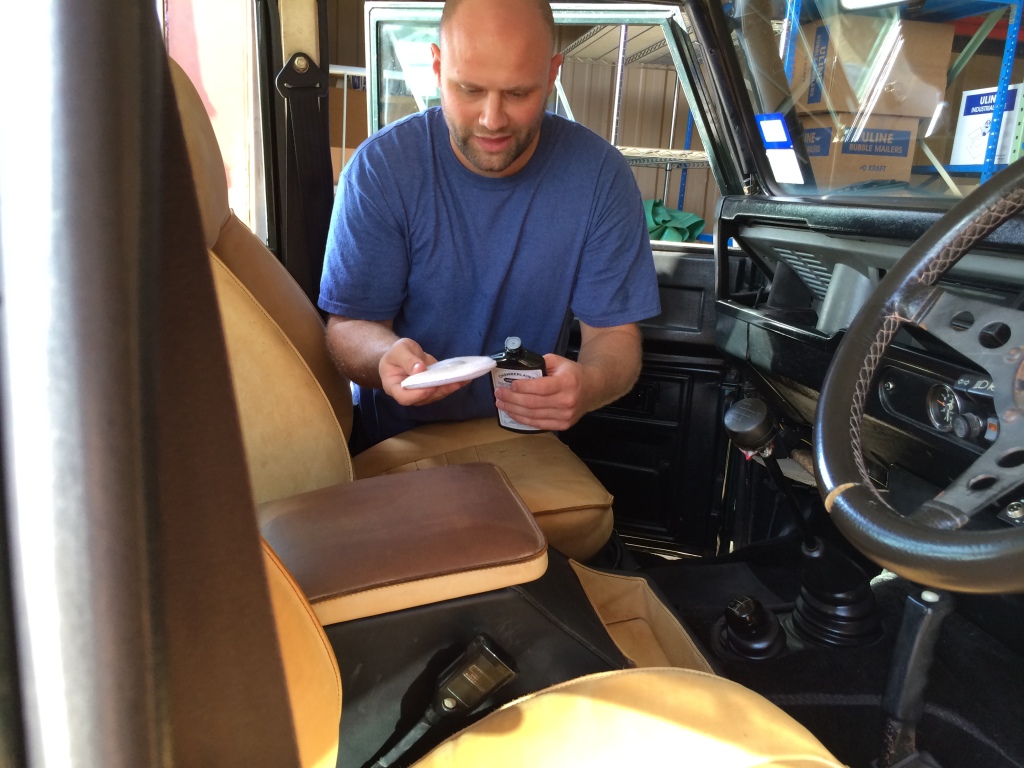
WHAT HAVE YOU DONE.
...
It's okay. We're still fine. What's one charcoaled armrest between us, am I right? As long as the rest of the car looks fine - oh God no.
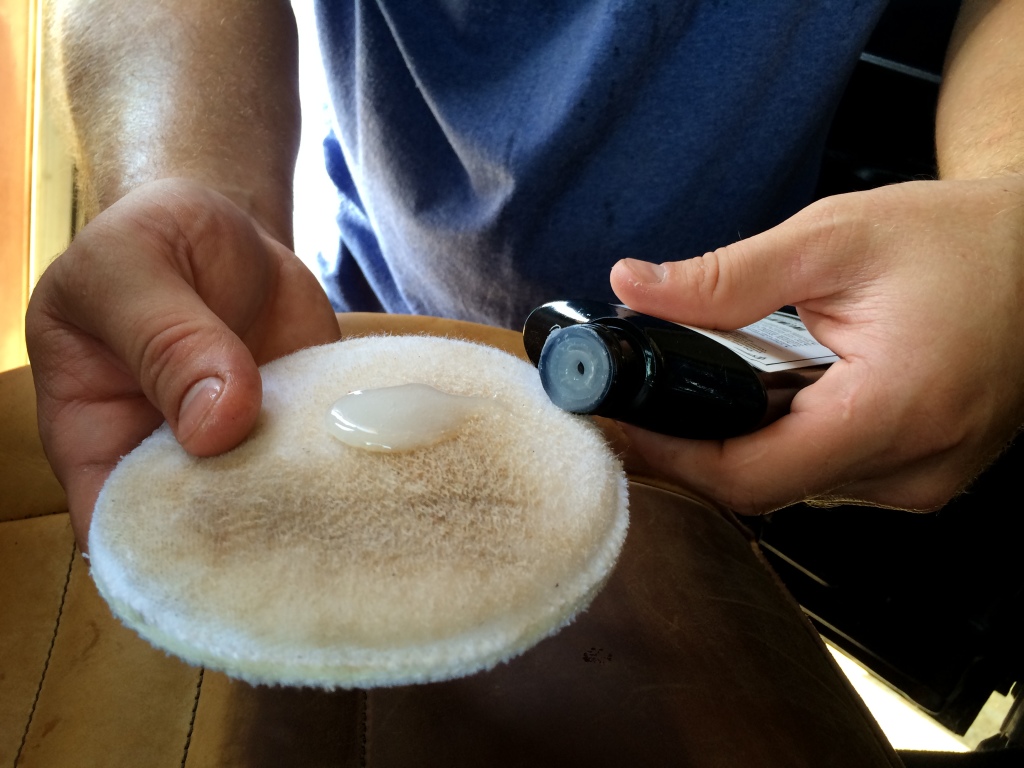
There goes my investment.
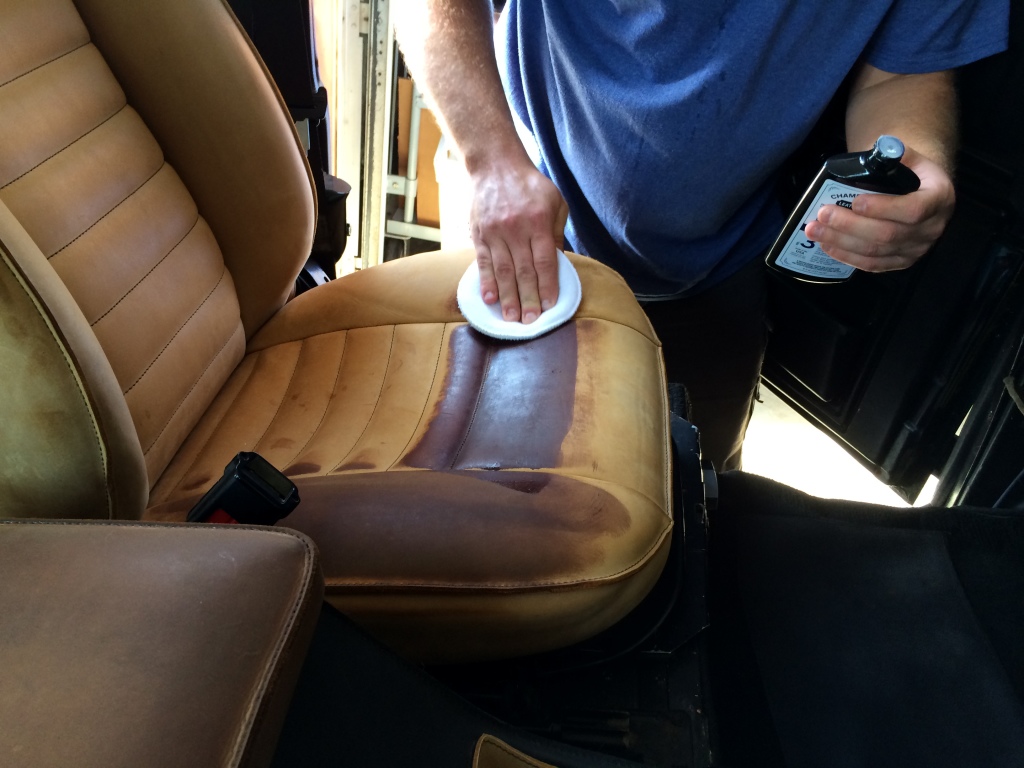
Nail in the coffin, eh Jonathan, ole buddy of mine? Seriously, how many thousands of dollars is this worth?
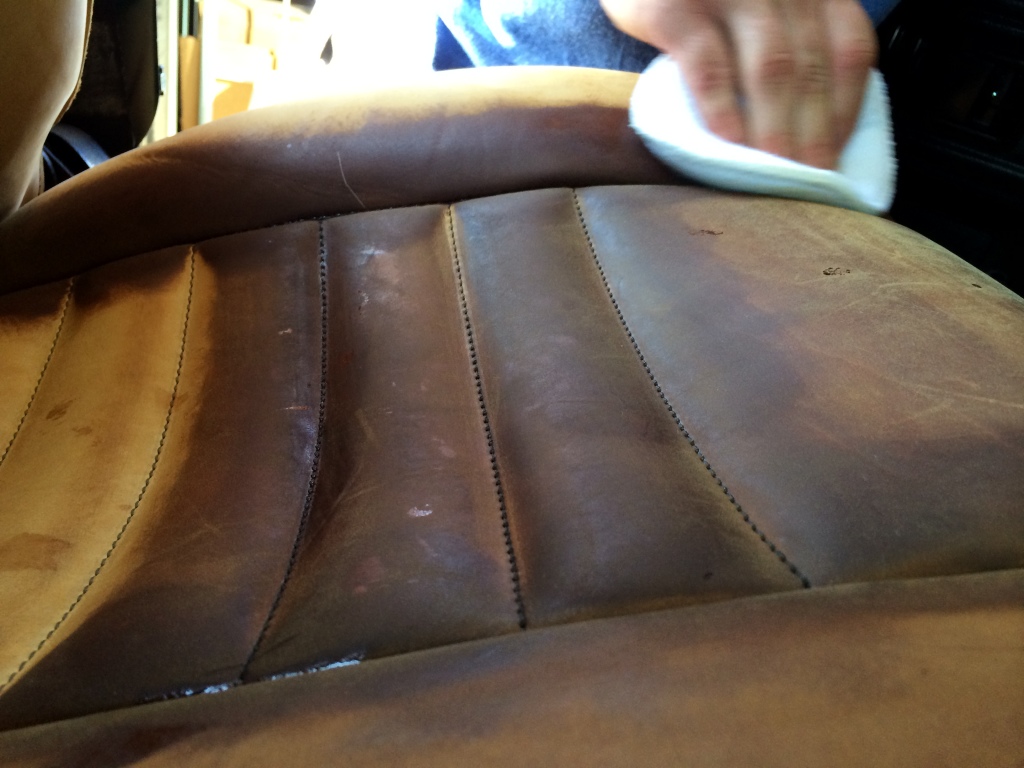
I mean: "was this worth?"
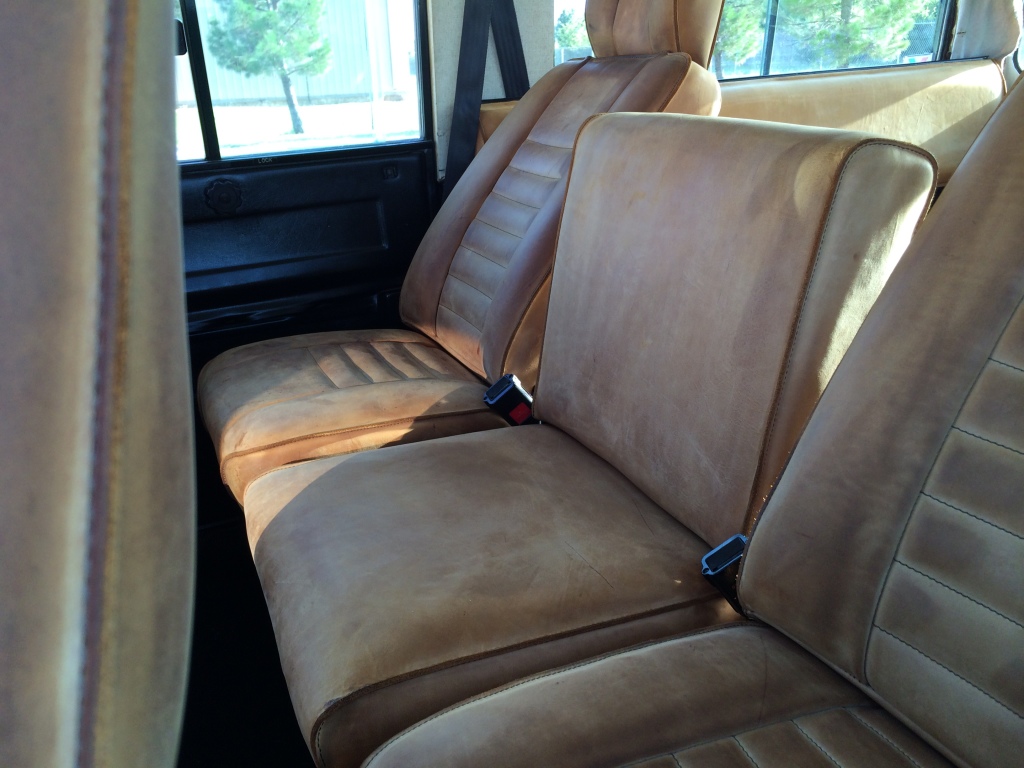
The battlefield cools to an eerie still. Damp, wax-stained tobacco paves the barren ground of this leather mausoleum.

Abandoning my wits behind me, I returned the Next Day, unable to dispel the beast from my mind. What manner of horror had my sweet rover become? Would I even recognize her? To this day, I think nothing could have prepared me for what I would see on the eve of that fateful morn.
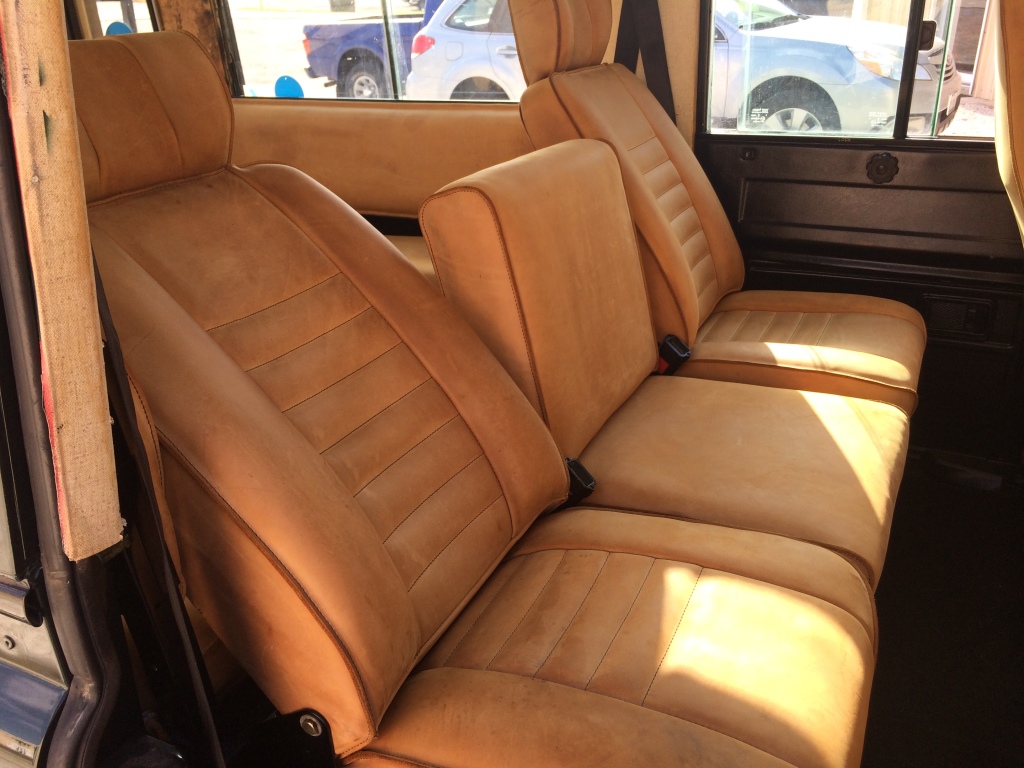
Huh. Actually, this isn't that bad.
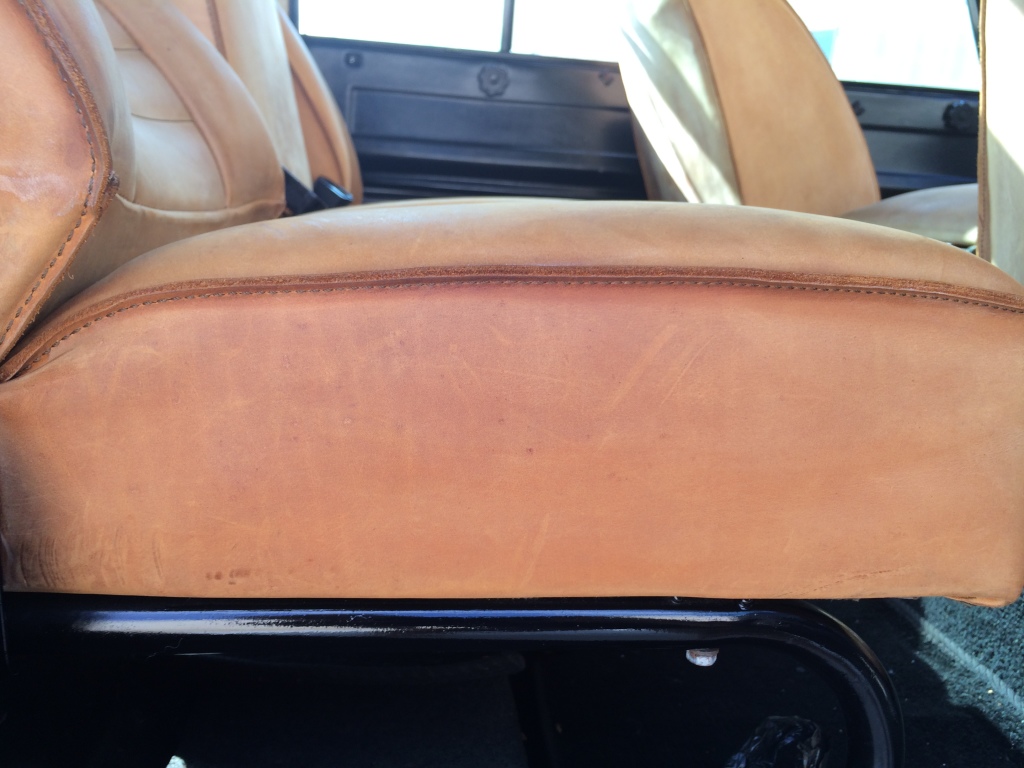
Kinda nice detail here.

FINE. You win boss. Water Protectant No. 3 is for the win.
That Worked
So what was I saying? Oh right, does leather conditioner darken leather? Yeah, it generally does. But this isn't necessarily a bad thing. Darkening can either give your leather a glow, or mess it up, or even help it grow a beautiful patina. In this case, darkening worked really well, because we had a leather type that is positively compatible with our recipe. Whenever you go to condition your leather, it's important your recipe is compatible too. Here's some advice.
Good principle to keep in mind is that the lighter the leather you've got, the darker it'll get. Heavier consistency conditioners, like Water Protectant or mink oil, will darken leather excessively. Our tobacco leather conditioned well partially because it was so dry, but also partially because this is full grain leather we're working with. Full grain leather, because it has a tougher and more complex tangle of fibers to work with, can generally absorb a lot more conditioner than lesser cuts of leather, like top grain or genuine. Similar principle holds true for finished and unfinished leather. Finished leather won't take as much conditioner, because protective pigments give it a slow absorption rate. Unfinished leather (like our Tobacco leather up there) will greedily absorb your recipes, and so it can be difficult to gauge just how much to use.
There are a few precautions you should always take to make sure the conditioner you plan to use will have the right kind of effects.
Know Your Leather
As I was saying earlier, leather is unique, and every kind of leather needs a certain kind of approach. Get familiar with the kind of leather you are working with. That comes through both research and experience. Read about what kind of leather you're buying before you buy it. Know the ins and outs. You can get a head start on that in our article "How to Identify Types of Leather" or "Buying Leather" shopping guide.
Read the Instructions
First, check the leather manufacturer's care instructions first. Companies will often give instructions with their products or display information on their website for how you should treat their products. Additionally, read the instructions for the leather conditioner recipe itself. You'll find these on the back label of every Chamberlain's Leather Milk bottle.
Test Your Recipe
Sample it in a discreet area. Like inside your wallet, or near the sole of your boot. Behind a pocket on your leather bag. You get the drill. Somewhere the leather runs that won't be readily visible. Just dab a small amount of your recipe there, and let it dry. If you like what you see, then by all means go with it. Just make sure you test it first.
Go Easy
Use light, even layers, one at a time. If you've used too little conditioner, that can be fixed. But using too much is not a mistake that's easily taken back. While it can be possible to restore darkened leather to a degree (you can read about that in our article "How to Restore Darkened & Faded Leather"), you should aim to avoid making that necessary. When you condition, use gentle, circular motions. Leather will absorb conditioner on its own - there's no need to press it into the material. Let it absorb into the surface on its own. Spread it evenly, to avoid a splotchy dry. Lastly, make sure you use light amounts at a time, only giving as much conditioner as naturally absorbs. If your leather eats the conditioner up and still looks like it can take some more, go ahead and give it a second layer. You could read a little bit more about how conditioner affects leather in our first Q&A "How Does Leather Breathe?"
Hope that helps you out, leathermancers. You all know those "haste makes waste" and "too much of a good thing is bad" and "knowing is half the battle" proverbs. Put them to good use. Here's a picture of a dog driving a land rover.

Contributors
Dave Munson, Saddeback Leather
Jonathan Munson
Joe Callander
Daniel Sutton
Dagney the Dog
